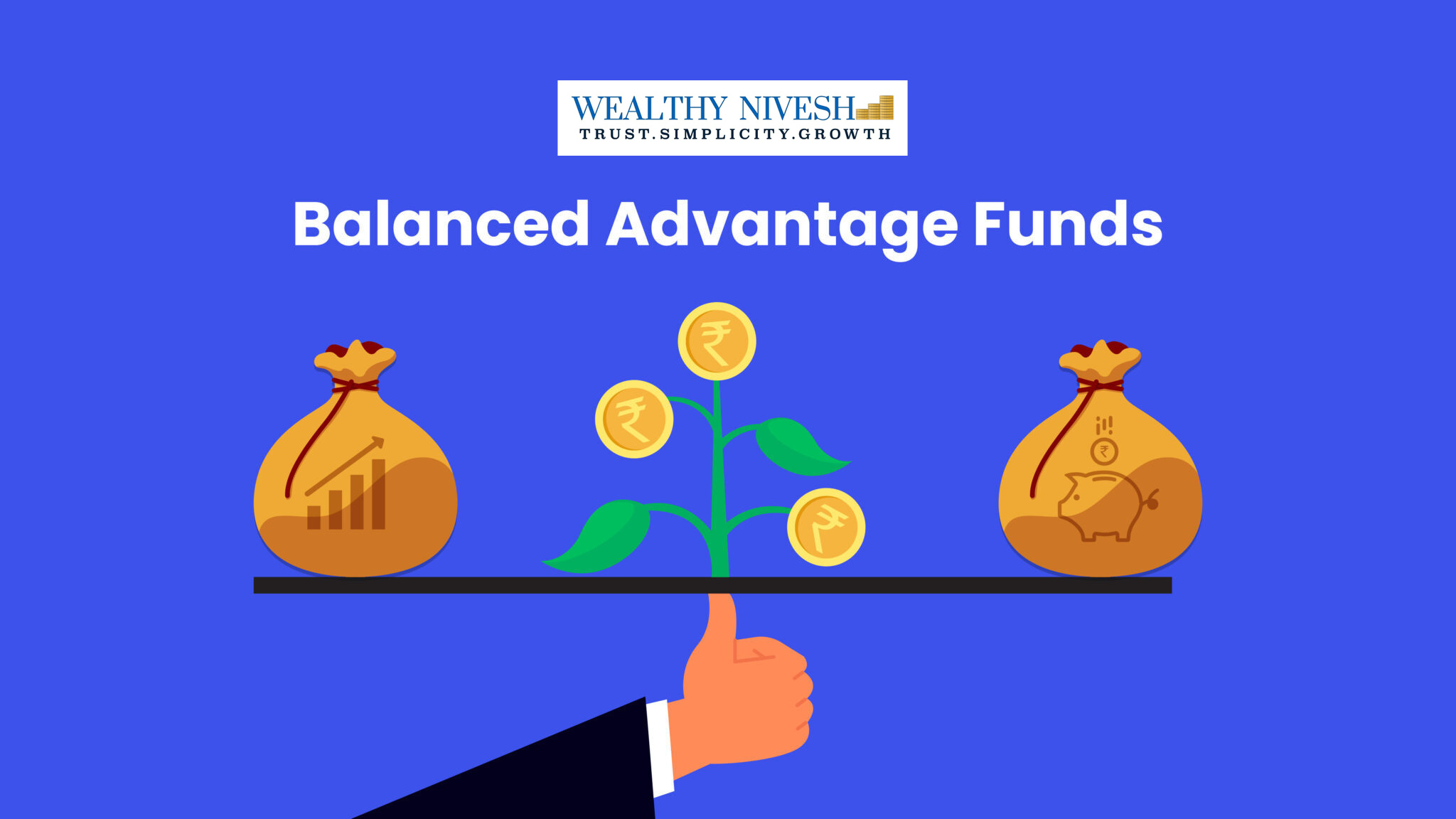
As the financial landscape continuously fluctuates, navigating market dynamics and managing taxation becomes a significant concern for investors seeking stable returns. In this narrative, we delve into the world of Balanced Advantage Funds (BAFs), dissecting their essence, strategies for stability amidst market volatility, and their potential benefits in addressing tax implications.
What are Balanced Advantage Funds?
Balanced Advantage Funds (BAFs) are hybrid mutual funds that dynamically manage asset allocation between equity and debt instruments. They decrease their equity allocation when markets are expensive and increase their equity exposure when markets are cheap. They work on the basic principle of “Buy Low & Sell High”.
Unlike traditional mutual funds that maintain a fixed allocation, BAFs employ a flexible approach, adjusting their equity exposure based on prevailing market conditions. This adaptability aims to mitigate risks associated with market fluctuations, making them an attractive option for investors seeking stability amidst volatility.
Asset Allocation
Net or Active Equity
This involves managing the fund’s exposure to equities and fixed income through a quantitative dynamic asset allocation model that responds to market conditions.
Gross Equity
This represents the Net or Active Equity + Hedged Equity. In order to maintain equity taxation, the majority of Balanced Advantage Funds maintain 65% gross equity allocation.
Fixed Income
The allocation to fixed-income instruments is determined by the same asset allocation model, typically capped at 35%. This limitation is in place to manage equity taxation while ensuring a balanced allocation.
Hedged Equity
A portion of the fund’s equity exposure is hedged using derivatives such as futures and options. For instance, if the fund holds Stock “A,” it may utilize derivatives by selling futures of Stock “A” in the market to hedge against potential losses. If the stock’s price falls, the scheme may incur a decline in the net asset value (NAV), but the futures position might generate a profit, neutralizing the impact on NAV.
Conversely, if the stock price rises, the NAV increases, but the futures position may incur a loss, again balancing the impact on NAV. The hedged equity component aims to mitigate market risks, reducing the overall portfolio risk while maintaining a gross equity exposure above 65%, essential for retaining equity taxation benefits.
Majority of Balanced Advantage Funds maintain 65% of gross equity exposure and qualify for equity taxation benefit. Very few of them also maintain 35% – 65% gross equity exposure to qualify for non-equity taxation with indexation benefit.
In both the above cases, taxation on their debt component also becomes lower when compared with taxation on traditional debt options – like Fixed Deposits and Bonds – which are taxed at an individual’s marginal tax rate.
Navigating Market Dynamics: The Role of Balanced Advantage Funds
Market dynamics, characterized by unpredictable shifts in economic conditions, interest rates, and geopolitical events, often create uncertainty for investors. BAFs aim to navigate these fluctuations by employing a systematic approach to asset allocation. Fund managers do thorough analysis of the markets, assess market indicators and accordingly adjust the portfolio’s equity-debt mix to capitalize on opportunities and reduce downside risks. This active management approach enables BAFs to potentially offer smoother returns compared to traditional equity-focused funds during turbulent market phases.
These funds dynamically shift between equity and debt to manage risk. They aim to capture growth opportunities during upswings while mitigating losses during market downturns, potentially offering smoother returns. Balanced Advantage Funds maintain a gross equity allocation of 65%, employing a flexible approach by investing in arbitrage and utilizing derivatives for hedging purposes. This strategy ensures adherence to the specified equity allocation, with the residual amount being invested in debt instruments.
Within the asset allocation strategy of BAFs, market valuations hold significant importance. The fund manager adjusts allocations based on market valuations. For eg: Fund managers will increase investments in debt during periods of overvalued equity markets. Similarly, they will increase equity allocations during phases when markets present attractive opportunities.
The Benefits of Balanced Advantage Funds
- Stable Returns: Balanced advantage funds invest in both debt and stocks. This mix helps cushion against stock market ups and downs. This means the returns you get from these funds might not swing as much as those from equity-only funds or stock-only funds.
- Lower Risk: These funds invest in both stocks and safer debt instruments. Because they’re not all in stocks, they’re better placed to lose less money when the equity market is going down . This makes them a good pick if you’re okay with a bit of risk but don’t want too much. Plus, they can still help you grow your money at a steady pace.
- Smart Money Moves: Managers of these funds keep changing assets where they invest. When times are good and stocks are up, they put more into stocks. When things go south, they shift more into safer things. So, these funds try to lower risk and aim for better returns.
- Less Watching Needed: Instead of keeping an eye on many different investments, you only need to watch one balanced advantage fund. It’s like having a bunch of different investments all wrapped up in one.
- Tax Perks or Benefits: These funds are treated like equity funds for taxes. This means you might pay less tax on the money you make if you hold onto your investment for a while. Balanced Advantage Funds are generally classified as equity-oriented funds for the purposes of taxation and thereby, capital gains are taxed at 10% (without indexation) if investments are held for more than 12 months & are taxed at 15% if investments are held for up to 12 months.
- Final Thoughts: Balanced advantage funds could help you reach your money goals with less risk than just investing in stocks or pure equity mutual funds. You also leave the decision of asset allocation to a professional fund manager. Hence, they are kind of like wall-season funds because the managers keep changing asset allocation to try and get the best results.
Not only that, but as discussed above, balanced advantage funds serve as a prudent investment avenue for navigating market volatility and potentially managing taxation concerns. Choosing these funds can mean getting steadier returns, lowering risk, making smart moves with your money, and having an easier time keeping track of your investments while enjoying potential tax benefits.







